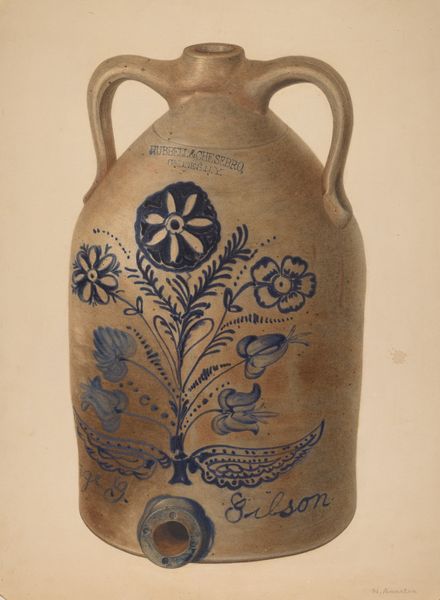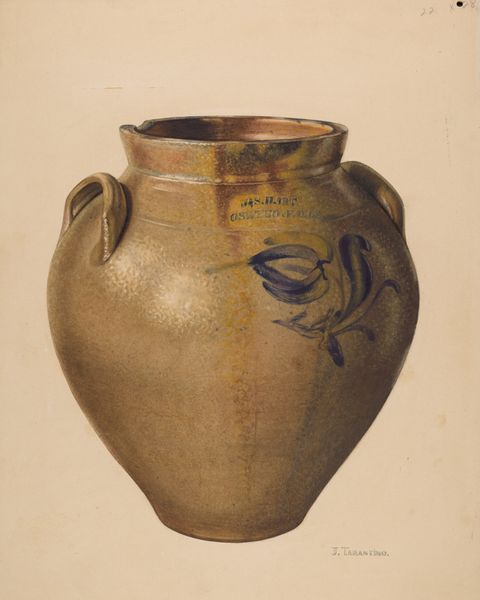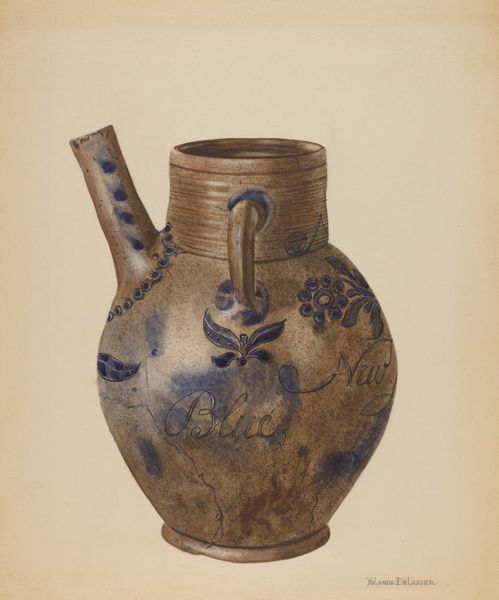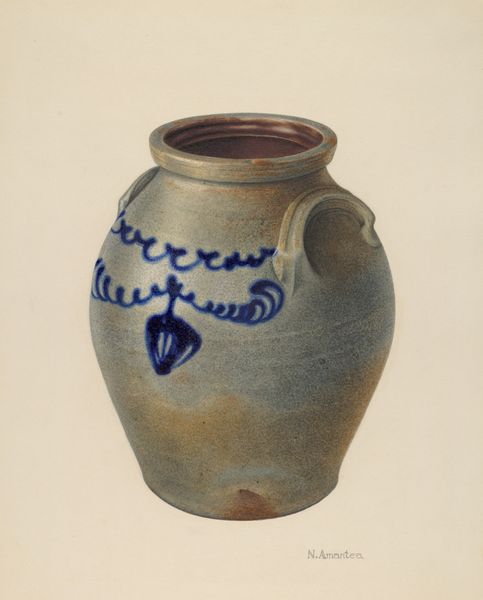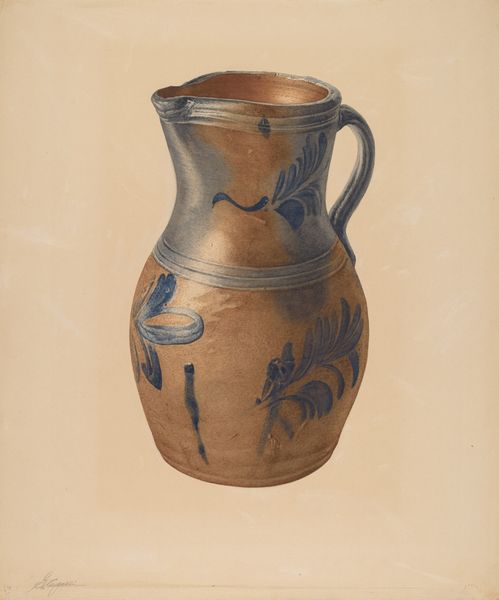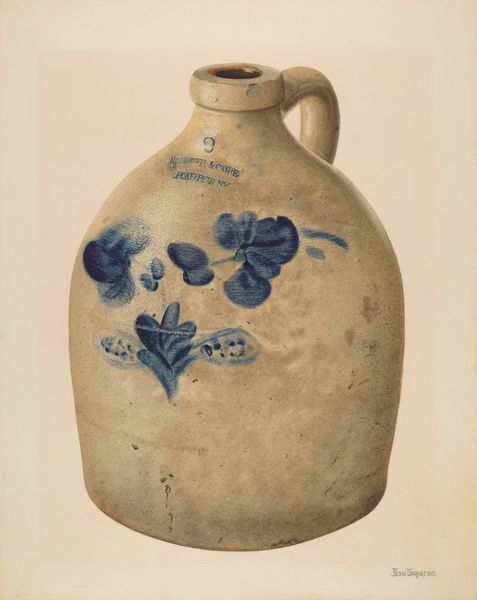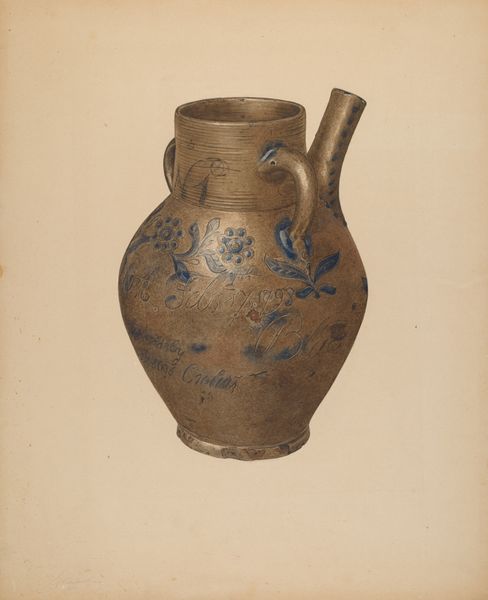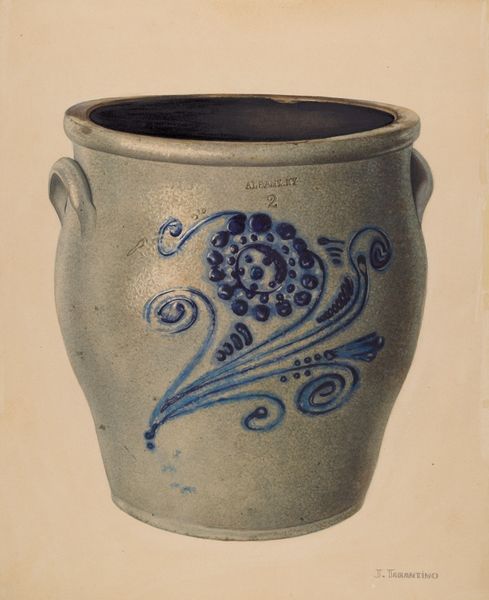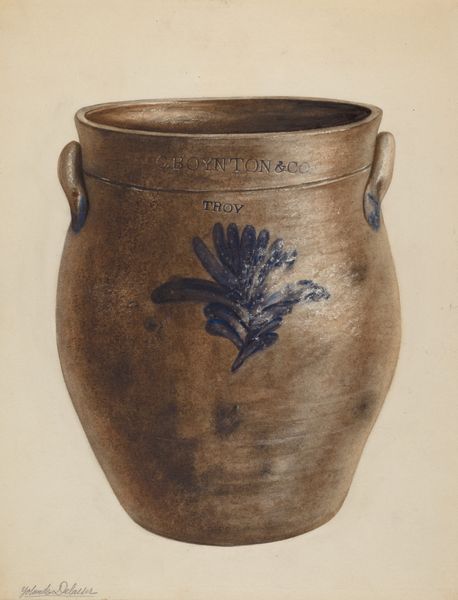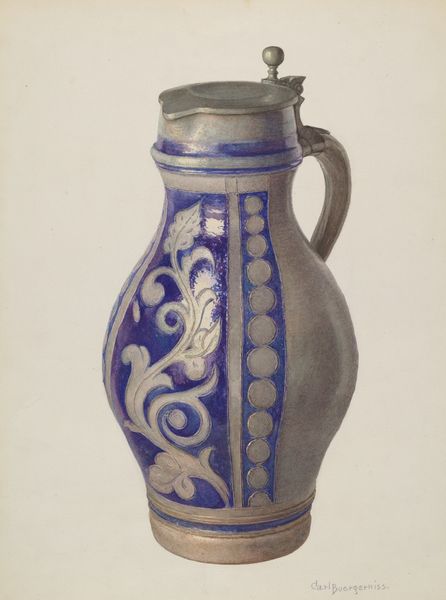
drawing, print, ceramic, earthenware
#
drawing
# print
#
ceramic
#
earthenware
#
folk-art
#
ceramic
#
earthenware
#
watercolor
Dimensions: overall: 40.9 x 30.4 cm (16 1/8 x 11 15/16 in.) Original IAD Object: 10 1/4" High 6 1/4" Dia
Copyright: National Gallery of Art: CC0 1.0
Editor: So this drawing, "Jar," around 1938 by George Loughridge, captures a ceramic earthenware jar with a lovely watercolor effect. There’s something so simple and folksy about it. What aspects of its historical context are most striking to you? Curator: What I find most compelling is how it reflects the public appreciation, or perhaps even the romanticization, of folk art during that period. It seems like Loughridge isn’t just depicting a jar; he’s capturing a piece of Americana, a connection to a simpler, pre-industrial past. Doesn't it also feel like he’s elevating this humble, utilitarian object to the level of fine art? Editor: Yes, I definitely see that! It feels almost like a celebration of everyday life. Is there any significance to the specific pottery style he chose to represent? Curator: Absolutely. Earthenware, especially with that blue decoration, has deep roots in American folk pottery traditions. Think about the societal conditions surrounding this piece. It’s made in the shadow of The Great Depression, right? Images that celebrated simpler times really resonated with the public. How does it fit in with artistic trends happening elsewhere at the time? Editor: Well, it feels very different from, say, the abstract expressionism that was brewing! This drawing feels much more aligned with regionalism in its focus on distinctly American subject matter. Curator: Exactly! It really speaks to a specific cultural moment where artists turned toward their regional identities. These trends really promoted appreciation of national folk art in public collections and education. Editor: It’s amazing how a simple drawing can reveal so much about a society's values and concerns at a particular moment. It really highlights the intersection of art and history. Curator: Indeed! Studying such images gives insight into artistic representations of historical context and social-political influences.
Comments
No comments
Be the first to comment and join the conversation on the ultimate creative platform.


